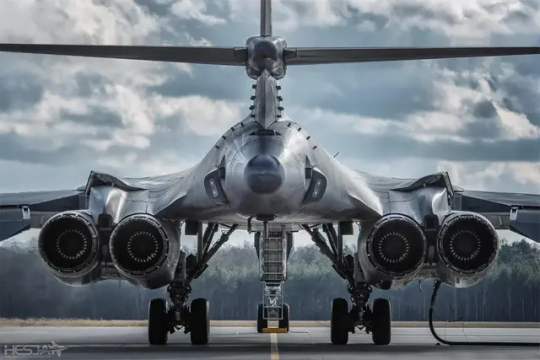#aviation
Explore tagged Tumblr posts
Text
I was today years old when I learned about this.



The story of British Airways Flight 009.
8K notes
·
View notes
Text

A cargo hauler taking off from the site of unpleasant doings, with a few special survivors on board… part of developing the Two Sky River book.
The wheeled canards leave little ground clearance, but the heavy main gear can handle the Valley's rock and sand.
327 notes
·
View notes
Text

76 notes
·
View notes
Text

In fairness, Ukrainian authorities might have thought the Ryanair executives were joking when they proposed resuming flights into the most dangerous European airspace since the 1944 Ruhr Valley.
65 notes
·
View notes
Text

A German Me 262 V303, a second V7 prototype. This particular aircraft is fitted with experimental wooden stabilizers - Lechfeld Airbase, Germany, summer 1944
#world war two#ww2#1940s#worldwar2photos#history#wwii#ww2 history#world war 2#1944#wwii era#ww2history#me 262#jet engines#jet fighter#Lechfeld#Germany#Lechfeld airbase#aviation#summer
65 notes
·
View notes
Text

A U.S. Navy Fighter Squadron Thirty Three F-14A Tomcat returning to the USS America after escort duty during Desert Storm FEB91. Starfighters (Ken Neubauer)
@kadonkey via X

#f14#f 14 tomcat#grumman aviation#fighter interceptor#aircraft#navy#aviation#us navy#carrier aviation#anytime baby!#cold war aircraft#fighter
45 notes
·
View notes
Text
Big Tech and “captive audience venues”

I'm on a 20+ city book tour for my new novel PICKS AND SHOVELS. Catch me in CHICAGO with PETER SAGAL next WEDNESDAY (Apr 2), and in BLOOMINGTON next FRIDAY (Apr 4). More tour dates here.

Enshittification is what you get when tech companies, run by the common-or-garden mediocre sociopaths who end up at the top of most businesses, are unshackled from any consequence for indulging their worst, greediest impulses:
https://pluralistic.net/2025/01/20/capitalist-unrealism/#praxis
The reason Facebook was once a nice place to hang out and talk with your friends and isn't anymore is that Mark Zuckerberg is no longer disciplined by competitors like Instagram (which he bought) nor by regulators (whom he captured), nor by interoperable tech like ad-blockers and alternative clients (which he uses IP law to destroy) nor by his own workforce (who have become disposable thanks to workforce supply catching up with demand). It used to be that Mark Zuckerberg couldn't really move the enshittification lever in the Facebook C-suite because these disciplining forces gummed it up. He had to worry about losing users, or about users installing alternative technology, or about regulators hitting him hard enough to hurt, or about workplace revolts. Now, he doesn't have to worry about these things, so he's indulging the impulses that he's had since the earliest days in his Harvard dorm, when he was a mere larval incel cooking up an online service to help him rate the fuckability of his female classmates.
When we had defenses, Mark Zuckerberg had to respect them. Now that we're defenseless, he's shameless. He's insatiable. He will devour us to the marrow.
When I'm explaining enshittification to normies, I often make comparisons to other places where you can't escape like airports and sports stadiums: "Facebook can afford to abuse you once they have you locked for the same reason that water costs $7/bottle on the other side of the airport TSA checkpoint." It's an extremely apt comparison, as you can verify for yourself by reading "Shakedown at the Snack Counter: The Case for Street Pricing," a new report from the Groundwork Collective:
https://groundworkcollaborative.org/work/street-pricing/
"Shakedown" makes the point that – as is the case with tech giants – sports stadiums and airports are creatures of vast public subsidy. If this seems counterintuitive, try Mariana Mazzucato's Entrepreneurial State, which lists all the ways in which the tech revolution represents a privatization of publicly funded research, as with the iPhone, whose semiconductors, internet connection, voice assistant technology, touchscreen and other components all count the public as a key investor:
https://www.pbs.org/newshour/economy/the-entrepreneurial-state-appl
And, as with airports and sports stadiums, the proprietors of the iPhone business are able to reap this gigantic public subsidy without taking on any public duties. Regulators that could impose some kind of public service obligations as quid pro quo for using public funds are AWOL, or worse, captured and complicit in the ongoing, publicly financed ripoff:
https://pluralistic.net/2024/08/15/private-law/#thirty-percent-vig
Airport, stadiums and tech platforms are all walled gardens – roach motels that are hard to escape once they've been entered. Thus the scorching prices of stadium and airport food, and the 30% transaction fees imposed by Apple and Google on app revenues (this is 1,000% higher than the average fees charged by the rest of the payment processing industry!), the 51% fees extracted by Google/Meta from advertisers and publishers (compare with the historical average of 15%), and the 45-51% that Amazon takes out of every dollar earned by its platform sellers. Once you're locked in, they can turn the screws, either by gouging buyers directly, or by gouging sellers, who pass those additional costs onto buyers.
Groundwork has a proposal to address this in physical settings: regulation. Specifically, a "street pricing" regulation that keeps the charges for food and drinks within these walled gardens to prices comparable to those on the outside. They note that these regulations enjoy wide, bipartisan support. 76% of Republicans support a regulation that can only be described as "price controls," two words that normally trigger head-explosions in the right.
How is it that such a commanding majority of Republicans can get behind government price controls? Simple: it's obvious that when a company no longer faces market discipline – when they're the only game in town (or on the other side of the TSA checkpoint) – that government discipline has to fill the vacuum, and if it doesn't, you will get mercilessly screwed.
This is where enshittification – a form of monopolistic decay unique to the tech sector – departs from everyday monopoly abuse in other sectors, like aviation and league sports. Tech has an in-built flexibility, the inescapable property of "interoperability" that comes standard with every digital system thanks to the universal nature of computers themselves.
Interoperable technologies let you hack Instagram to restore it to the state of privacy- and attention-respecting glory that made it a success in the first place:
https://pluralistic.net/2023/02/05/battery-vampire/#drained
They let you monitor Facebook's failures to uphold its own promises about not profiting from paid political disinformation:
https://pluralistic.net/2021/08/06/get-you-coming-and-going/#potemkin-research-program
They let you claw back control over how Facebook's feeds are constructed:
https://pluralistic.net/2021/10/08/unfollow-everything/#shut-the-zuck-up
They let Apple customers maintain their privacy, even if they have the temerity to be friends with Android users:
https://pluralistic.net/2023/12/07/blue-bubbles-for-all/#never-underestimate-the-determination-of-a-kid-who-is-time-rich-and-cash-poor
They let shoppers use Amazon to order from local mom-and-pop stores:
https://pluralistic.net/2022/07/10/view-a-sku/
They even let you destroy the net worth – and power – of Elon Musk:
https://pluralistic.net/2025/03/08/turnabout/#is-fair-play
Interoperability creates a unique, easily administered source of discipline over tech bosses that just isn't available as a means of countering the ripoffs we see elsewhere, including in sports stadiums and airports. That means that, far from being harder to fix than other disgusting scams in our society, tech is easier to fix. All that stands in the way is the IP laws that criminalize the kind of reverse-engineering work that allow the users of technology to have the final say over how the devices and services they rely on work:
https://locusmag.com/2020/09/cory-doctorow-ip/
Those IP laws were spread around the world by the US Trade Representative, who insisted that every country that wanted to export its products to the US without punitive tariffs must pass laws protecting the rent-extracting scams of US tech giants. With those tariff promises now in tatters, there's never been a better time for the rest of the world to jettison those Big Tech-protecting laws:
https://pluralistic.net/2025/01/15/beauty-eh/#its-the-only-war-the-yankees-lost-except-for-vietnam-and-also-the-alamo-and-the-bay-of-ham

If you'd like an essay-formatted version of this post to read or share, here's a link to it on pluralistic.net, my surveillance-free, ad-free, tracker-free blog:
https://pluralistic.net/2025/03/28/street-pricing/#sportball-analogies

Image: Daniel Brody (modified) https://commons.wikimedia.org/wiki/File:South-Station-snack-bar-1970.jpg
CC BY-SA 4.0 https://creativecommons.org/licenses/by-sa/4.0/deed.en
#pluralistic#street pricing#captive audience venues#groundwork collective#enshittification#we dont have to care were the phone company#regulation#competition#privatized gains socialized losses#sportsball#aviation#travel#monopolism#interop#interoperability#comcom#competitive compatibility#felony contempt of business model#adversarial interoperability
36 notes
·
View notes
Text
Air Canada's first delivered A320, with ear warmers and a scarf (1990).

9K notes
·
View notes
Text

Near the Cosmos. Dawn flight by Stanislav Torlopov (1984)
8K notes
·
View notes
Text

#f#fighterjet#aviation#avgeek#airforce#aviationphotography#aircraft#fighterpilot#military#aviationlovers#militaryaviation#instagramaviation#jet#instaaviation#militaryaircraft#aviationdaily#aviationgeek#pilot#fighteraircraft#airplane#usaf#su#airshow#militaryjet#a#fighter#planespotting#plane#avporn#mig
3K notes
·
View notes
Text

What We Learned from Flying a Helicopter on Mars

The Ingenuity Mars Helicopter made history – not only as the first aircraft to perform powered, controlled flight on another world – but also for exceeding expectations, pushing the limits, and setting the stage for future NASA aerial exploration of other worlds.
Built as a technology demonstration designed to perform up to five experimental test flights over 30 days, Ingenuity performed flight operations from the Martian surface for almost three years. The helicopter ended its mission on Jan. 25, 2024, after sustaining damage to its rotor blades during its 72nd flight.
So, what did we learn from this small but mighty helicopter?
We can fly rotorcraft in the thin atmosphere of other planets.
Ingenuity proved that powered, controlled flight is possible on other worlds when it took to the Martian skies for the first time on April 19, 2021.
Flying on planets like Mars is no easy feat: The Red Planet has a significantly lower gravity – one-third that of Earth’s – and an extremely thin atmosphere, with only 1% the pressure at the surface compared to our planet. This means there are relatively few air molecules with which Ingenuity’s two 4-foot-wide (1.2-meter-wide) rotor blades can interact to achieve flight.
Ingenuity performed several flights dedicated to understanding key aerodynamic effects and how they interact with the structure and control system of the helicopter, providing us with a treasure-trove of data on how aircraft fly in the Martian atmosphere.
Now, we can use this knowledge to directly improve performance and reduce risk on future planetary aerial vehicles.

Creative solutions and “ingenuity” kept the helicopter flying longer than expected.
Over an extended mission that lasted for almost 1,000 Martian days (more than 33 times longer than originally planned), Ingenuity was upgraded with the ability to autonomously choose landing sites in treacherous terrain, dealt with a dead sensor, dusted itself off after dust storms, operated from 48 different airfields, performed three emergency landings, and survived a frigid Martian winter.
Fun fact: To keep costs low, the helicopter contained many off-the-shelf-commercial parts from the smartphone industry - parts that had never been tested in deep space. Those parts also surpassed expectations, proving durable throughout Ingenuity’s extended mission, and can inform future budget-conscious hardware solutions.

There is value in adding an aerial dimension to interplanetary surface missions.
Ingenuity traveled to Mars on the belly of the Perseverance rover, which served as the communications relay for Ingenuity and, therefore, was its constant companion. The helicopter also proved itself a helpful scout to the rover.
After its initial five flights in 2021, Ingenuity transitioned to an “operations demonstration,” serving as Perseverance’s eyes in the sky as it scouted science targets, potential rover routes, and inaccessible features, while also capturing stereo images for digital elevation maps.
Airborne assets like Ingenuity unlock a new dimension of exploration on Mars that we did not yet have – providing more pixels per meter of resolution for imaging than an orbiter and exploring locations a rover cannot reach.

Tech demos can pay off big time.
Ingenuity was flown as a technology demonstration payload on the Mars 2020 mission, and was a high risk, high reward, low-cost endeavor that paid off big. The data collected by the helicopter will be analyzed for years to come and will benefit future Mars and other planetary missions.
Just as the Sojourner rover led to the MER-class (Spirit and Opportunity) rovers, and the MSL-class (Curiosity and Perseverance) rovers, the team believes Ingenuity’s success will lead to future fleets of aircraft at Mars.
In general, NASA’s Technology Demonstration Missions test and advance new technologies, and then transition those capabilities to NASA missions, industry, and other government agencies. Chosen technologies are thoroughly ground- and flight-tested in relevant operating environments — reducing risks to future flight missions, gaining operational heritage and continuing NASA’s long history as a technological leader.
youtube
You can fall in love with robots on another planet.
Following in the tracks of beloved Martian rovers, the Ingenuity Mars Helicopter built up a worldwide fanbase. The Ingenuity team and public awaited every single flight with anticipation, awe, humor, and hope.
Check out #ThanksIngenuity on social media to see what’s been said about the helicopter’s accomplishments.
youtube
Learn more about Ingenuity’s accomplishments here. And make sure to follow us on Tumblr for your regular dose of space!
5K notes
·
View notes
Text

76 notes
·
View notes
Text

B-1B Lancer rear aspect.
41 notes
·
View notes

